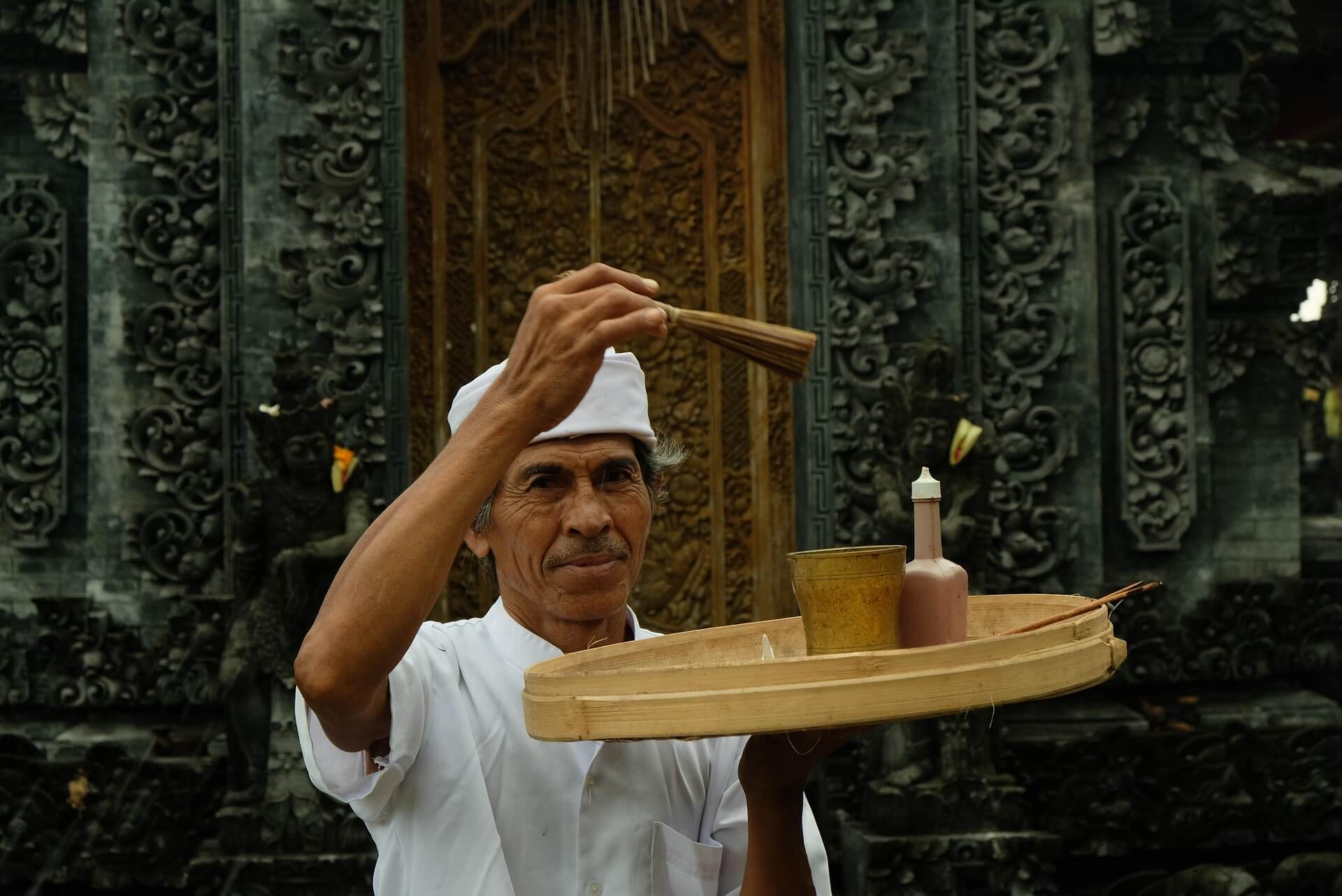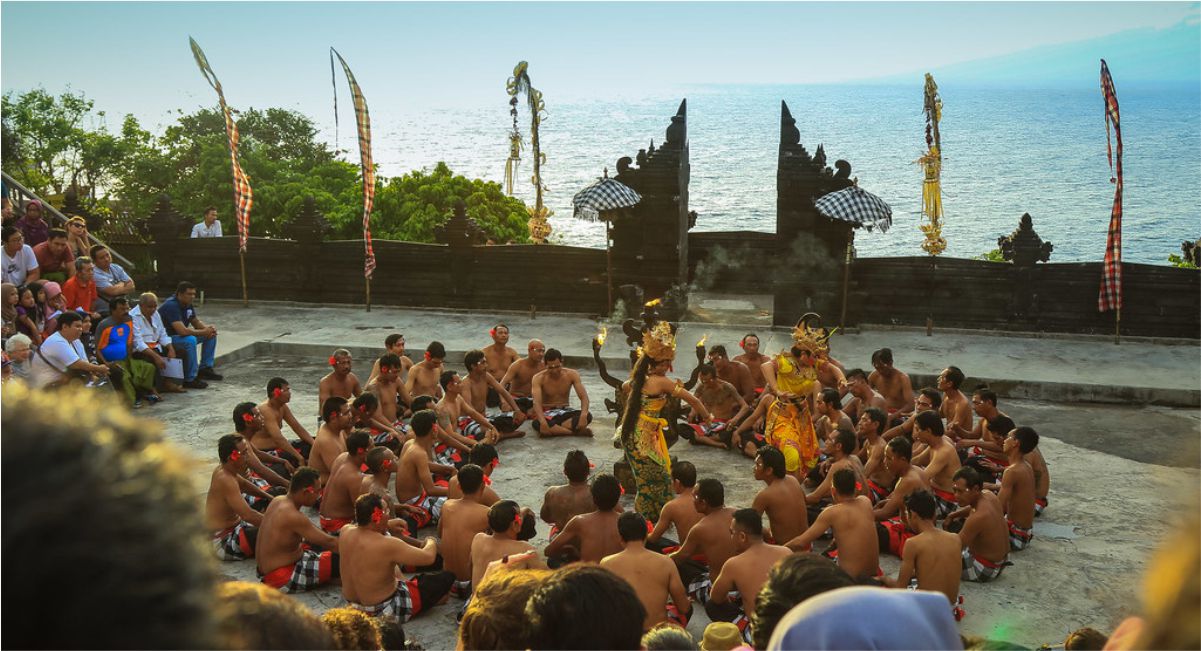While the south overflows with Instagram crowds and pool clubs, up here life moves to an older rhythm. This is where you decide exploring Buleleng’s cultural treasures. Many grandmothers still weave temple offerings by hand, where centuries-old stone carvings whisper history, and where ceremonies aren’t performances. They’re sacred traditions passed down through generations.
At Bali Travel Vacation, we don’t do cookie-cutter tours. Our local guides (who grew up in these villages) will take you behind the scenes at family-run workshops. They arrange intimate encounters with master artisans, lead your visit to witness breathtaking temple ceremonies, and show you the secret spots where tourism hasn’t changed a thing.
Read This Article: Affordable Waterfall Tour Bali: Budget-Friendly Vacation, Stunning Views
Want the real Bali? Let’s go beyond the guidebooks together. Come in exploring Buleleng’s cultural treasures in the dry season (April-Oct) unless you enjoy tropical downpours. Renting those beat-up cars, the potholed roads to these villages are half the adventure. And for god’s sake, leave the booty shorts at the hotel. These sacred spaces demand sarongs and common sense.
Buleleng doesn’t care about your Instagram. It’s too busy keeping Bali’s soul alive. Want in?
Sidetapa Traditional Village

Every crosshatch pattern tells of monsoon rains and harvest moons, of generations who understood that beauty must be useful too. The magic really happens at dusk. As fireflies begin their dance, the village transforms. Someone starts pounding rice, another stokes the communal oven, and suddenly you’re not a tourist anymore. You’re family being shown how to wrap banana leaves around sweet rice cakes, your clumsy attempts met with warm laughter.
Here’s the thing they don’t tell you in exploring Buleleng’s cultural treasures guidebooks. Sidetapa doesn’t just show you Bali’s past. It lets you live it. Whether you’re sipping tart brem wine with farmers or learning that the “elephant foot” house pillars actually saved lives during invasions, you’ll leave with more than photos. You’ll carry pieces of soul.
History and Bali Aga Identity
Perched 650 meters above sea level, Sidetapa is embraced by lush forests and traditional gardens. Originally named Gunung Sari Munggah Tapa, its name changed to Sidetapa after a Buddhist priest healed a plague using sacred water from Kayon Teben.
Sidetapa is among the oldest Bali Aga villages, alongside Tenganan, Trunyan, Pedawa, and Cempaga. Its people still uphold pre-Majapahit social systems, beliefs, and architecture.
Sidetapa’s Cultural Highlights
A cultural tour here reveals unique traditions. From historic architecture and local handicrafts to rituals and immersive activities.
Unique Architecture
Homes in Sidetapa are Bale Gajah Tumpang Salu, resembling ancient houses with four pillars (symbolizing an elephant’s legs) and a triple-tiered roof. It’s interesting how these houses are built facing away from the road. Some say it was a clever trick to hide from Majapahit invaders or even King Mayadenawa himself.
A Timeless Craft
About 75% of Sidetapa’s residents are bamboo artisans, crafting decorative lamps, chairs, and household items. Locals pass down weaving techniques through generations, with distinct styles in each banjar (Delod Pura, Dajan Pura, Lakah). Let’s support our local artisans by buying directly from them. Every purchase makes a difference!
The Sacred Agung Briyang Ritual
If you’re lucky in the Bali packages tour, you might catch the breathtaking Agung Briyang. A spectacular ritual held only once every three years under the glow of the full moon during Sasih Kedasa (the tenth month of the Balinese calendar). This sacred ceremony is a powerful plea to the gods for protection and a spirited defiance against the forces of darkness.
Top Things to See, Do, and Explore
A visit here lets you experience traditional palm sugar-making from nira. Then, discover the art of bamboo weaving taught by skilled local artisans. You can also witness the making of Brem Buah, Sidetapa’s signature fermented drink.
Looking for an authentic taste of Bali’s ancient culture? Sidetapa is a hidden gem where tradition thrives from intricate bamboo crafts and age-old rituals to stunning traditional architecture. Every moment here feels like stepping into a living story. Escape the crowds and experience the real Bali!
Sembiran: Where Your Watch Stops Working
The village rooster crows at what he insists is dawn, though judging by the stars, it might be 3 AM or possibly 1382. Time gets slippery here.
Breakfast with the Ages
At the warung, the cook flips cassava cakes on a blackened stone slab that turns out to be a repurposed 9th-century temple relief. “Holds heat better than modern pans,” she explains, scraping char off what might be a royal inscription.
The World’s Most Relaxed Museum
There’s no ticket booth at Sembiran’s “archaeological sites.” You’re likely to find them by tripping over a moss-covered megalith while chasing a runaway mango. Ask it to the Bali Travel Vacation.
The local kids use 2,000-year-old grinding stones as goal posts, and the most interesting artifacts often serve as doorstops in family compounds.
Read This Article: Beyond Limits: Thrilling Motorbike Rides Through Nusa Penida Treacherous Paths
Lunchtime Philosophy
Over a banana-leaf plate of spiced fish, the village elder muses: “They call our temples ‘ruins,’ but look…we’re still using them!” He gestures to where his grandson is napping against a weathered statue, the stone worn smooth by centuries of similar naps.
A chicken pecks at rice offerings placed that morning. The same ritual, give or take a few details, that’s been performed here since before Angkor Wat’s first stone was laid.
When Evening Unfolds Like a Palm Leaf Manuscript
As fireflies begin their nightly dance (a tradition they’ve maintained far longer than any human ritual), you realize with a start that your phone has been dead for hours. No one seems concerned. The village operates on a simpler chronology. There is time to finish the story, time to share another cup, time to listen to the stones whisper.
You come to see ancient Bali, but Sembiran has shown you something better. A present that knows how to carry its past lightly, like a grandmother balancing a temple offering on her head while laughing at a child’s joke.
Sembiran Survival Tips
Let the village cats guide you in exploring Buleleng’s cultural treasures. They know all the best shortcuts through time. If someone offers you coffee, accept. It’s probably brewed in a pot older than your country.
Don’t bother asking “how old is this?” The honest answer is usually “older than we remember”.
Your watch will give up eventually, surrender to the rhythm of roosters, looms, and storytelling.
Secret Rendezvous with Beji Temple
It’s 5:23 AM. A gecko, your grumpy morning greeter, glares down from his carved alcove throne. We’ve played this game before.
“Too early for tourists,” his clicking tongue seems to say.
You may produce your peace offering along Bali Travel Vacation. A crumpled bag of banana chips. He sniffs imperiously before scrambling down to investigate. Temporary truce established.
You may freeze. A slight figure in white moves like smoke between the shrines. The first sunbeam strikes. Suddenly the temple transforms into golden light revealing hidden stories in the stone.
A mischievous monkey peeking from behind a Dutch trader’s hat. Then, the way Dewi Sri’s stone skirt seems to ripple when you blink. That one warm spot near the western wall where the temple cats bake themselves like little loaves. He likes when visitors bring peanuts.
The best offerings come from Warung Made two blocks east. Their coconut cakes make even stone deities smile. This is when Beji Temple shares its secrets, in that magical hour when night and morning hold their breath (check your Bali packages tour for sure).
Breakfast of Champions
The seller’s knowing smile meets you at the gate, her hands already shaping today’s offerings. “You came hungry,” she states more than asks, pressing warm pisang rai into your palm. The sticky rice cakes steam in the cool air as you share this communion of tourists and temple keepers.
“The gods like theirs with extra palm sugar,” she confides, winking as she adds an extra dollop to the altar’s portion.
Temple Games
A chorus of giggles leads you to a group of children playing “spot the hidden carving”. Their version of hide and seek. A little girl drags one of them to her favorite. A cheeky monkey disguised in vine motifs. Her friends demonstrate how the morning light makes the monkey wink at precisely 7:23 AM.
The Rhythm of Worship
As the sun climbs, the temple hums to life. The metallic chime of a spoon against an offering plate. The whisper of brooms on centuries-old pavers and the sudden flutter of a priest’s white robe around a corner.
You may help them to fold banana leaves into tiny boats for flower offerings. Your clumsy fingers earn you the nickname “Buda”. Not for the enlightened one, but for the way you resemble the village’s famously slow-witted rooster.
Read This Article: Safe Travel Tips for a Bali Boat Tour
The Parting Gift
As midday approaches, the head priest presses something into your hand. A single frangipani blossom that fell onto the central shrine.
But that weird temple stillness? Still humming under your skin. Up on the wall, some judgmental gecko gives you the side-eye like, “Oh, you think you’re leaving? Nice try.” And honestly? That little jerk is right.
Beji isn’t the kind of place you check off some list of Bali package tours. It’s the kind that climbs into your backpack and starts whispering to you at 3 AM when you’re back home eating cereal in your pajamas.










